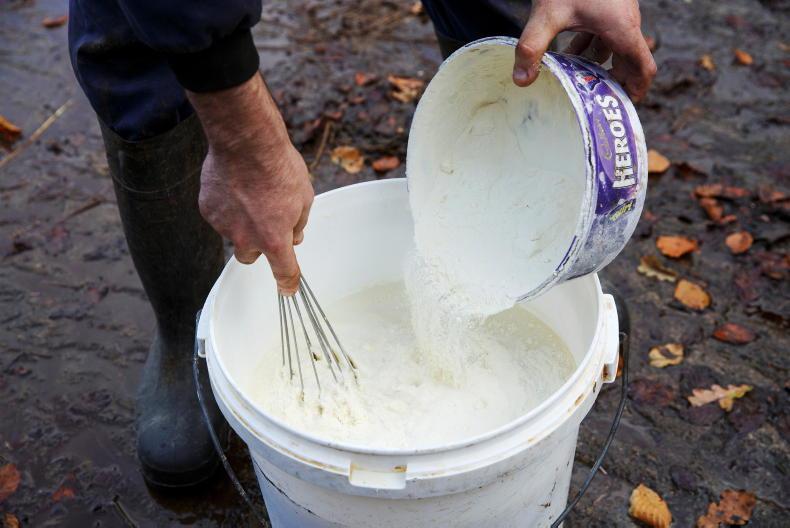Products, prices and specifications of milk replacers on the Irish market are detailed in Table 1.
As regular readers will recognise, this table has grown dramatically over the last number of years – a reflection of the growth in the market for milk replacers and the entrance of new players in the market.
The effects of this extra competition in the market can only be seen as good news for farmers, as prices for milk replacer have remained more or less unchanged over the last four years.
Now whether or not that accurately reflects the price of raw ingredients going into milk replacers would take further analysis, but either way, stable prices are stable prices.
Specification
There are two aspects to the decision on what type of milk replacer to buy – price and specification.
The specification of the milk replacer is what is going to drive animal performance. Yes, feeding rates have a big impact on performance, but feeding more of an inferior product is not the solution to achieving high daily liveweight gain.
In the dairy setting, the goal is to be at target liveweight at mating time
One of the issues of high milk feeding rates in calves is a reluctance by the calf to start eating solid feeds and some of the high weight gains achieved while being fed milk could be lost post-weaning. In the dairy setting, the goal is to be at target liveweight at mating time. In the beef sector, it’s a bit more nuanced but the overall objective should be to get the animals slaughtered in the shortest time and at the least cost.
In terms of specification, protein levels are hugely important for growing animals like calves.
While many milk replacers will contain a blend of dairy and non-dairy proteins, we don’t really know the exact proportions of each
However, the source of that protein is probably as important as the level of protein itself.
Vegetable-based proteins are less digestible than dairy-based protein such as whey and skim. While many milk replacers will contain a blend of dairy and non-dairy proteins, we don’t really know the exact proportions of each.
Milk replacers with a high level of vegetable-derived proteins tend to have higher fibre contents. Animal Health Ireland (AHI) says that a fibre content greater than 0.15 in milk replacers indicates the inclusion of plant-based proteins.
Ideally, these milk replacers should not be fed to young calves which are not able to digest plant-based proteins. The average oil content in milk replacers in Table 1 is 18.6%. Oil replaces butterfat in milk replacers and, according to AHI, is a good substitute for it.
Prices
In terms of price, the average price per litre of mixed milk replacer at 12.5% solids is 28c/l.
For dairy farmers who are considering feeding milk replacer you need to compare the price of the milk replacer to the expected milk price received.
The other thing to consider is the work involved in feeding milk replacer versus whole milk
The best way to do this is to look at last year’s milk price received for February and March, presuming base price hasn’t changed too much since then.
The other thing to consider is the work involved in feeding milk replacer versus whole milk.
That will vary depending on farm and feeding method.
Mixing
When mixing milk replacer, calculate the total amount of feed you need, eg if you are feeding 10 calves 2l of milk you need 20l of mixed milk in total.
If the feeding rate is 15%, the calves need to get 300g of powder each at each feed, or 3kg of powder for the bunch.
As milk powder will displace water, reduce the amount of water used by the quantity of powder.
Instead of mixing 3kg of powder into 20l of water, mix 3kg of powder into 17l of water to make 20l of mixed milk.
When mixing, pour the correct amount of milk powder into half the desired amount of water and mix with a whisk or other mixing device. Then add the rest of the water. Never mix with boiling water as this could corrupt the proteins. Only ever mix and feed with water at or below body temperature. Milk replacer can be successfully fed cold.






 This is a subscriber-only article
This is a subscriber-only article










SHARING OPTIONS: